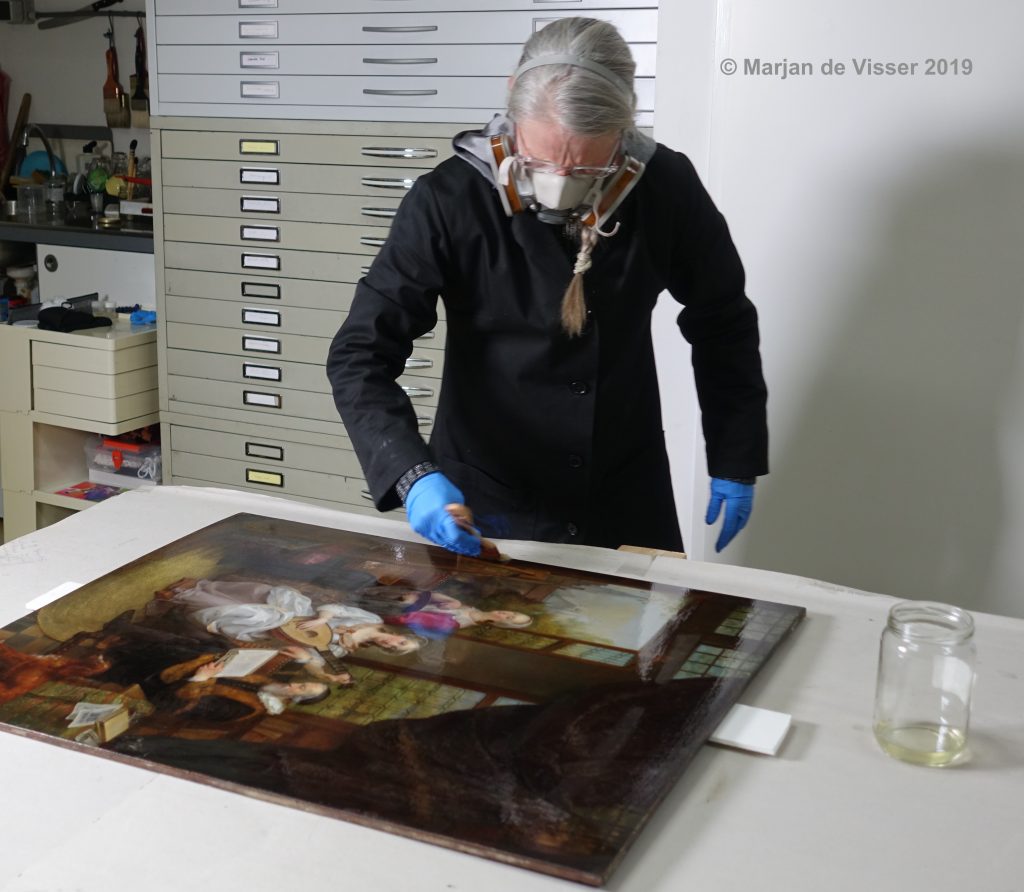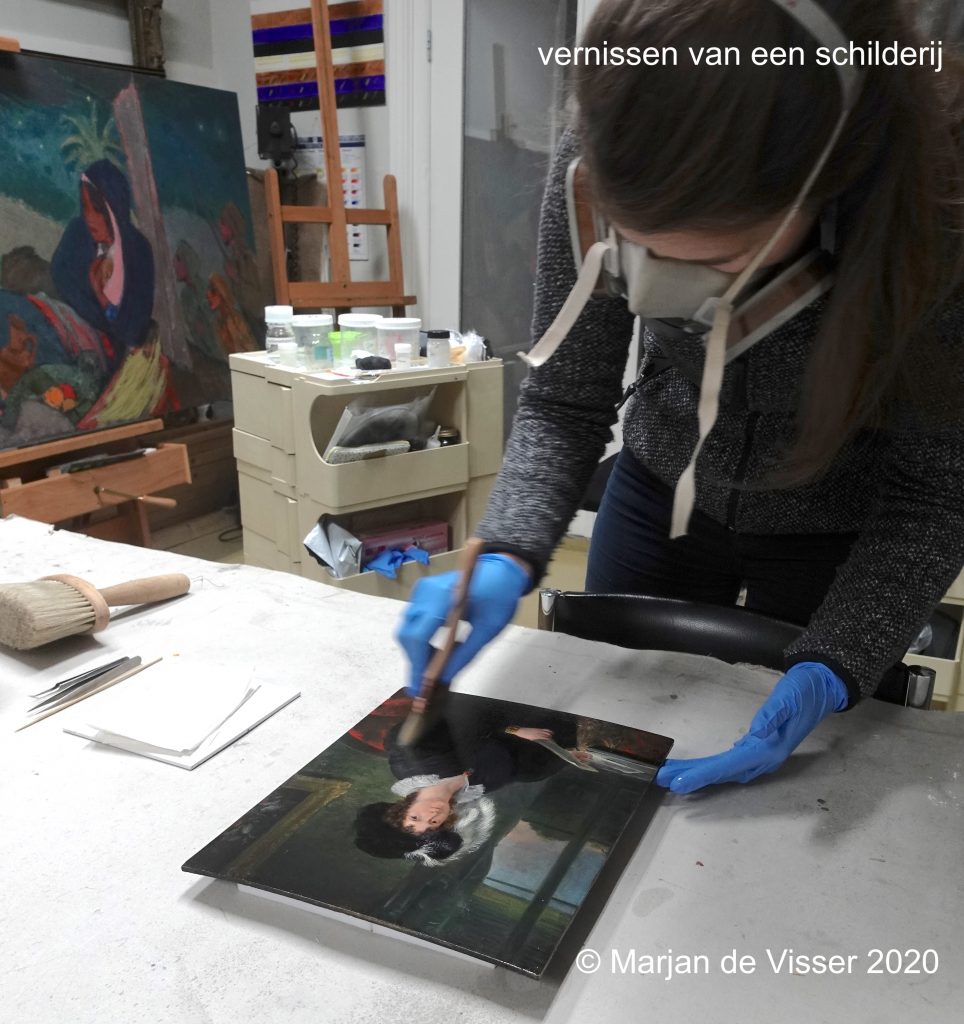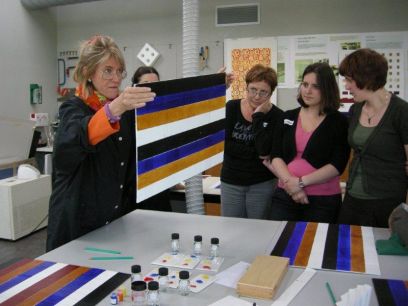Re-varnishing a painting

A painting is usually re-varnished during a restoration. Especially when the conservator and owner have decided to remove a layer of varnish during treatment. Varnishing a painting can be done in different ways. Of course it can be don using avarnish brush. But it is also possible with a spray. And even with a dot of silk with varnish in it. The methode and choice of layers is different every time for every painting.
Why an new layer of varnish?
Unfortunately, layers of natural resin varnish yellow. Also, some synthetic become milky. Some, like damar, are sensitive to moisture. A pity because such a varnish distorts the colours of the painting. And the composition also loses its strength and expression. This old layer of varnish can be removed during restoration. But after removal, the performance looks matte and unsaturated. The contrasts have disappeared. The colours are dull. But a new layer of varnish will saturate the colours again. It will also revive the composition and performance.
Taken in account that an original varnish layer is part of the artistic performance. And sometimes its data and value is more important than the expression of the painting. Therefor it the conservator can propose to keep it. An examination of the objects befor treatment can reveal this.
Which varnish resin is chosen?
The Marjan de Visser Restoration Studio has a large selection of varnishes for re-varnishing a painting. All varnishes are self-made. As a result, we know exactly what result can be achieved. The choice of varnish is partly determined by the restoration process. Even more important is the desired appearance of the painting. But the wishes of the owner also count. In addition to natural resins such as damar and mastic, there is also a choice of synthetic resins.
Knowledge of varnishes and painting varnishes
The knowledge of varnishes and varnishes has been built up through years of experience and workshops on varnish by Jill Whitten and Robert Proctor.










